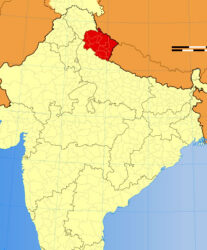Rescue workers recovered 58 victims of the glacier burst and flash flood in the Chamoli district of Uttarakhand in northern India.
They expect to find more as 171 remain missing as they continue recovery attempts and to clear the extensive damage to the Rishiganga and Dhauliganga hydel [hydro] projects.
Villagers from 13 different areas were also trapped and cut off by the floods caused by the glacier burst.
Rescue operations by the authorities are still taking place in order to find the ones who are missing and recover bodies of those trapped under the debris.
The bodies of 31 of the 58 have been recovered, including the 11 who were trapped under the Tapovan tunnel, which is just south of the border with China and west of Nepal. The cause of the death as reported by the authorities is due to sludge and water entering their lungs.

“This is not the first time Uttarakhand has seen a climate tragedy,” said Shinjini Mudgil, an environmental studies student. “The floods and landslide of 2013 caused by a cloud burst which also resulted in the loss of life and a lot more things.”
The glacier burst in early February in the Chamoli district has largely been blamed on the climate change happening in the country.
“The Air Quality Index of the country has been above 300 which is neither normal nor safe for the citizens,” said Katha Ray, a climate change activist. A range of between zero and 30 in the AQI is considered good, while 300 and above is deemed hazardous.
“Changes need to be made. New rules, guidelines and restrictions need to be implemented by the authorities in order to prevent worse natural calamities happening in the future,” Ray said.
A study conducted in 2019 shows the glaciers in the Himalayan region have been melting at twice the speed as they were before and losing half a meter of ice each year. Being close to the region, Uttarakhand faces the consequences of these changes.
In 2013, the state faced one of the worst natural disasters the country has ever seen when a cloud burst resulted in floods and massive landslides and 6,000 people lost their lives.
“I remember I was there with my family on a vacation when this happened and I was terrified,” said Ahaan Gupta, who was in Uttarakhand during the 2013 floods.
Construction of hydro projects such as dams along the state’s rivers and other infrastructure developments in the state have also been blamed for climate change and tragedies in past years.
“I know development is necessary for any country but there needs to be a balance between development and the preserving the environment and at this point I think we need to focus on our environment more,” said Shinjini Mudgil, an environmental studies student.
Trivendra Singh Rawat, the Chief Minister of Uttarakhand state, has ensured compensation to the families of those who lost their lives.

